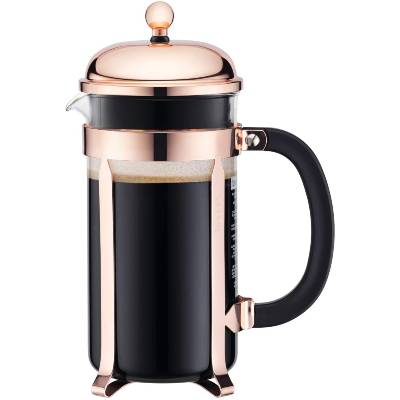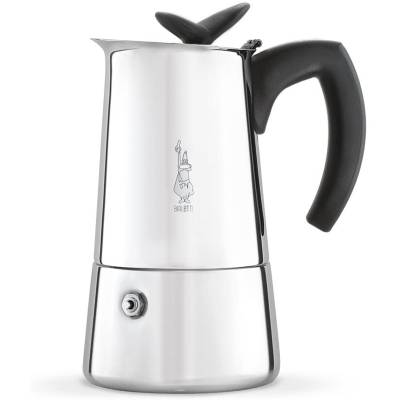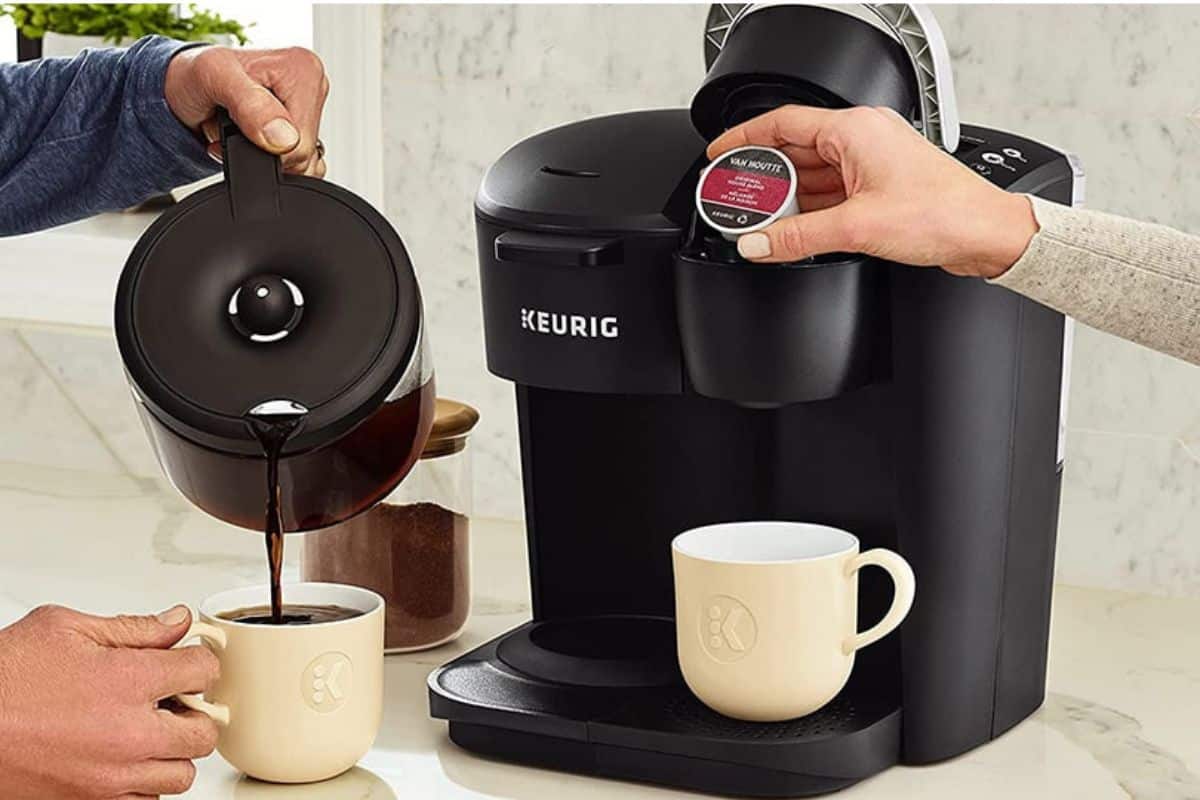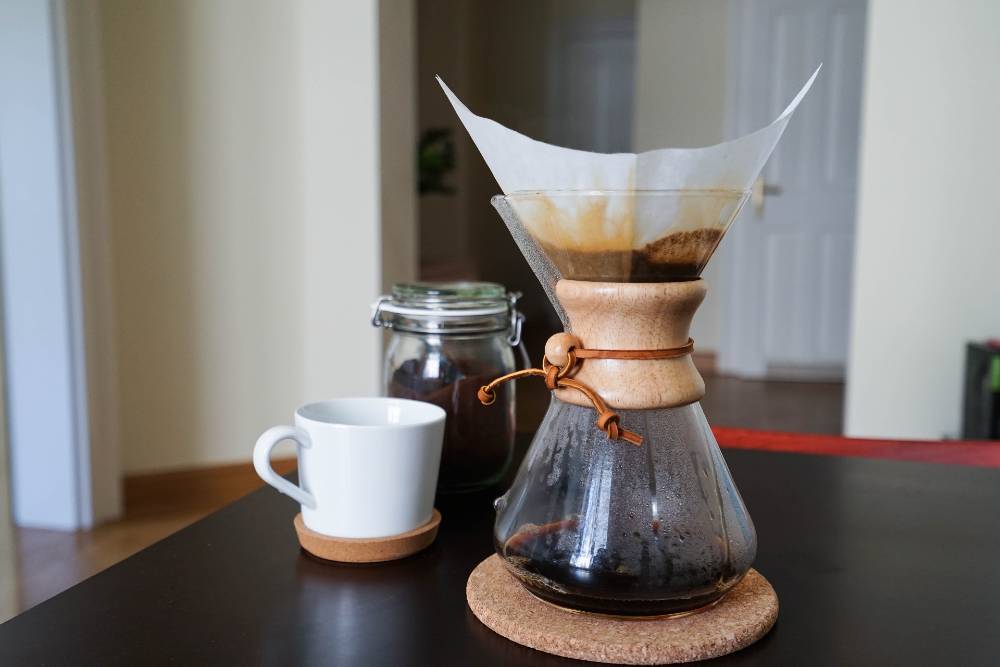This is it!
The jury is out and it’s time to clear up once and for all, which is the best brewing method. The delicate French Press or the sleek Moka Pot?
The two coffee brewing vessels both bring a variety of cards to the table and each one has a rich and full-bodied argument as to why it is the better choice for the job at hand.
If you’ve spent sleepless nights, pondering into the early hours, trying to decide which coffee gadget is the correct one then you can breathe a sigh of relief.
This article outlines the strengths and weaknesses of the French Press and the Moka Pot so you can clear up, once and for all, which one should take pride of place in your kitchen!

The French Press
Let’s start with the humble French Press. This is a popular coffee brewing vessel that has been around since the early 1900s. What started as a cheesecloth stretched over a screen has evolved into a stainless steel or nylon mesh, carefully crafted into a plunger that gently separates the solid grounds from the fresh coffee brew.
The French press works by pouring hot water over ground coffee in a cylindrical glass or plastic jug. After 4 minutes the plunger is depressed into the liquid and as it descends into the murky depths it gathers with it, every single elusive grain of coffee and slowly forces them down to depths so deep, they can never grace your coffee cup.
The French Press produces a full-bodied brew with a rich, fine-textured sediment that satisfies a full taste experience. You can make anywhere from 1 to 14 cups of coffee depending on the size of your jug.
BODUM CHAMBORD FRENCH PRESS

- Versatile brew
- Easy to tweak to your taste
- Choose from a range of colors
- Available in four sizes from 12 ounces to 51 ounces
- Shatterproof Glass Carafe Option
- Easy to clean
The Moka Pot
Next up we have the Moka pot and I have to say, the design of these coffee brewing devices really stands out. The Moka pot is a stovetop contraption so is typically made out of stainless steel or aluminum.
The base of the pot sits directly on the gas flame or electric cooktop and is a hollow container that holds the water. Balanced on top of this, is a funnel shaped basket. The basket holds your ground coffee whilst the tip of the funnel sits submerged in the water.
The final part of the Moka pot is the jug that holds your fresh brew. This screws on top of the base and forms a tight seal. When the water boils, pressure forces water up the funnel, through the coffee grounds, and the resultant hot coffee comes spurting out into the jug.
The result is a thick, strong, concentrated, espresso like brew that has a sharp taste. It really gives you that caffeine kick and the brew can be topped up with hot water (a bit like an Americano) to give a smoother finish.
Bialetti Stainless Steel Musa Stovetop Moka Pot

- Makes a brilliant strong coffee
- Easy to use
- Makes a consistently great coffee
- Can be used on any kind of stovetop
- Sleek and stylish
Kettle Vs Hob
The first obvious difference between the Moka pot and the French Press is the method by which you heat the water. The Moka pot requires an electric or gas hob (or any heating device – wood burner, aga, open fire, the options are endless!) to heat the water to boiling. It simply won’t work if you just pour water in from the hot kettle.
The French Press requires a separate vessel to heat the liquid. Whilst it’s conventional to use a kettle you can really get creative. If you’re feeling fancy you can buy a special coffee kettle that heats the water to the exact temperature required for a perfect brew.
If you don’t have a kettle you can heat water in a pan on the hob, in a jug in the microwave, pour it straight from a hot water urn, heat it in a tin can over an open fire whilst singing “kumbaya” or scoop it directly from a natural hot spring (as long as you don’t mind a hint of sulfur in your cup o’ Joe!)
Whichever manner you choose to heat your water (I’m not judging), the ideal temperature should be between 195F and 205F (90C to 96C) to avoid burning the coffee.
The verdict here is the Moka Pot wins where it comes to all-in-one brewing but the French Press wins the creative award.
Grind Size
The size of the coffee grounds can make a big difference when it comes to brewing coffee in a French Press. The coffee steeps in water so a much coarser grind will give plenty of flavor whilst still allowing removal of the grounds.
If you like to grind your own beans then the coarsest setting on the grinder will ensure you get a perfect cup of java from your trusty French Press. If you like to buy pre-ground coffee try to select one ground with French Press in mind.
Now the Moka Pot. This device is a little less fussy when it comes to the grind size. You want a finer grind but not as powder fine as espresso otherwise you can end up clogging the filter. The Moka pot can be quite forgiving if you like to use pre-ground coffee and has some room for adjusting the grind size to suit your taste buds.
To round this up, the French Press wants a coarse grind whereas the Moka pot likes a finer one. The Moka pot is a bit more flexible with the grind but both vessels need a consistent grind to maximize flavor (avoid blade grinders and stick to burr!).
Brewing Method
To go from fresh beans to juice you will need to take some action. This coffee isn’t going to brew itself and this is your time to shine.
For the classic French Press, you’ll need a French Press, some coffee (plus grinder if whole beans), and a method for heating water.
Start by grinding beans at a 1:12 ratio to the volume of water. The standard 8 cup french press can hold around 360 grams of water (roughly 12 ounces) so the coffee weight would be 30 grams.
Next, you’ll want to heat the water to between 195-200F (90-94C). Once it’s hot, start by gently soaking the ground coffee in just enough water to submerge it (about 60 grams of water if you want to be exact).
Let it “bloom” for 30 seconds and then give it a gentle stir with a custom made bamboo stirrer (or literally any kitchen utensil, I only draw the line at using a rusty nail!).
Top up the pot with the rest of the water and let it brew for 4 minutes. Once that timer rings, don’t stop to turn it off, race immediately to the plunger but don’t whack it down in your haste.
Gently and with even pressure, guide that mesh through the coffee until you almost reach the bottom. Leave a little space for the grounds to settle and you’re ready to pour the perfect cup.
What a faff! If you don’t appreciate the finer things in life, you can just bung the coffee in the pot, splash boiling water over it and guess at random when the plunger should go down. I’m not here to police you.
Now the Moka Pot. It’s simple as 1, 2, 3. You can pre-heat the water beforehand, I don’t do this and I find the taste to be quite satisfactory.
- Add cold (or pre-heated) water to the base of the Moka pot, fill to the line, or just below the air inlet. Place the basket on top.
- Add ground coffee to the basket (around 15 grams for a 4 cup pot) and gently level the surface using your finger or a spoon. Screw the top part in place (use a towel if the water is hot) and don’t over tighten it.
- Place the pot over a moderate to high heat and leave the lid open. When the coffee starts to bubble through, close the lid, and remove the pot from the burner. You can use cold water or a damp towel around the base at this point to stop the extraction.
There you have it. A concentrated fresh brew that takes less than 5 minutes to make. The Moka pot may look complicated but it’s actually a less involved way to make a decent cup of coffee.
Brew Control
Don’t you just love micro-managing every part of your day? If this sounds like you then coffee brewing is going to be right up your street!
There are lots of little tweaks and changes you can make to ensure you get the brew that’s right for you but some brewing methods are more versatile than others.
The Moka pot can be adjusted slightly. You can play with grind size and the water temperature when added to the pot. Whilst this gives you some freedom to express yourself the options do eventually run out.
The pot is pretty fixed where it comes to coffee and water volumes and the water temperature has to get to boiling to produce the steam.
This method is best if you like consistency with your coffee.
Now the French Press is another story altogether. That thing can produce liquid gold in the form of coffee or dirty dishwater depending on how you throw everything together.
You can play with the grind size, water temperature, volumes of coffee and water, and brew time. You can soak the grinds to allow blooming and you can adjust the pressure used on the plunger.
You can adjust and tweak your routine until you have a mug of perfection or you can throw everything together without thinking about it and have a gamble. There really is a method to suit everyone so the French Press wins the award for being the most modifiable.
Taste
The taste in coffee from a French Press vs a Moka Pot differs in more ways than one. The Moka Pot brings a sharp, concentrated, espresso-like shot of coffee whereas the French Press brings a rich depth of flavor and texture.
Taste is a difficult one to compare between the two brewing methods as it really depends on too many different factors and preferences. The French Press varies wildly when it comes to flavor as discussed above.
Ultimately it comes back to you, the coffee lover, trying these methods and deciding for yourself which one is the best for you!
The Take Home
The Moka Pot is a sleek and stylish coffee brewer. It’s pretty easy to use and produces a fairly consistent cup every time.
The French Press is a popular and versatile choice. It’s highly modifiable but can be quite tricky to get just right.
The best option depends on how you like your coffee, whether you prefer rich and full bodied or sharp and strong and how creative you like to get with your coffee brewing routine.
Related Reading
Chemex vs V60 (Powerful Pour-Over Potions)
Ristretto vs Espresso (It’s Quality Over Quantity)
Latte vs Macchiato (Layers of Luxury)
Flat White vs Latte (Spinning Silk From Milk)
White Coffee vs Black Coffee (What’s the Difference? It’s Not What You Think)
8 Best Coffee Makers For Beginners 2021 – An Experts Buyer’s Guide
How to Use a French Press to Make Coffee (and How Not To)





